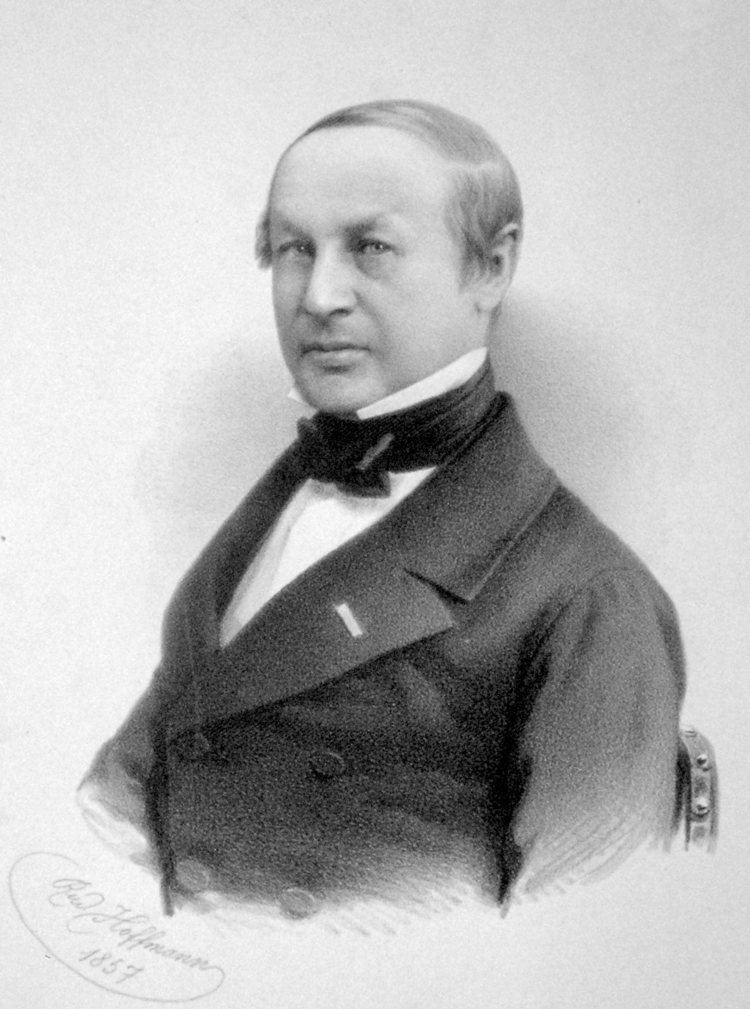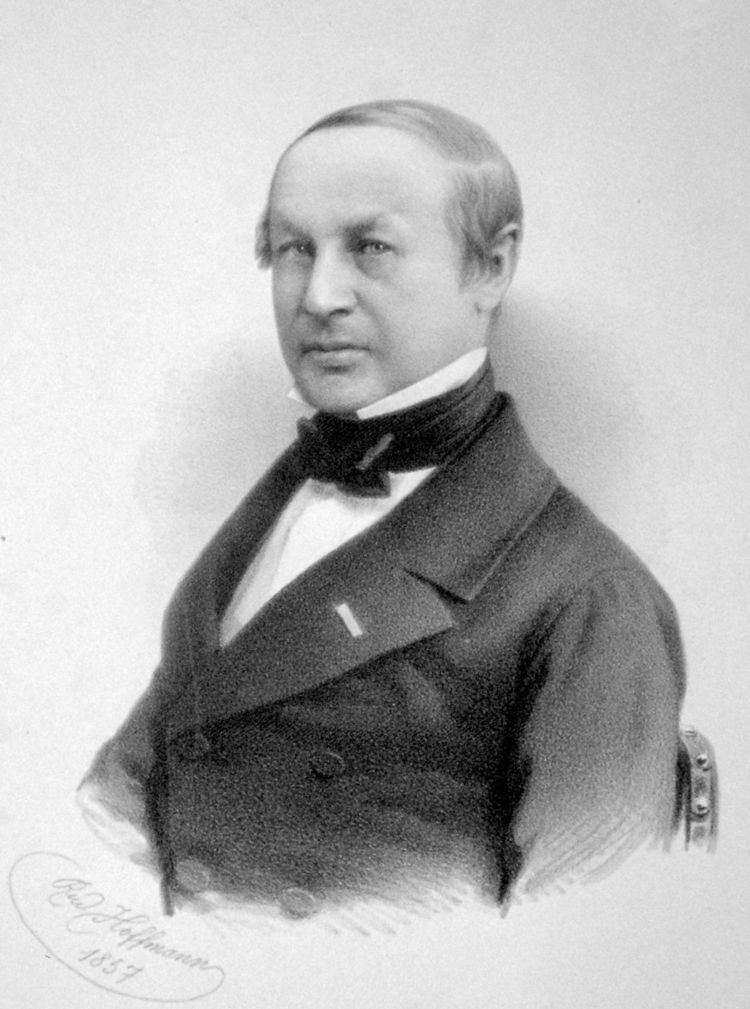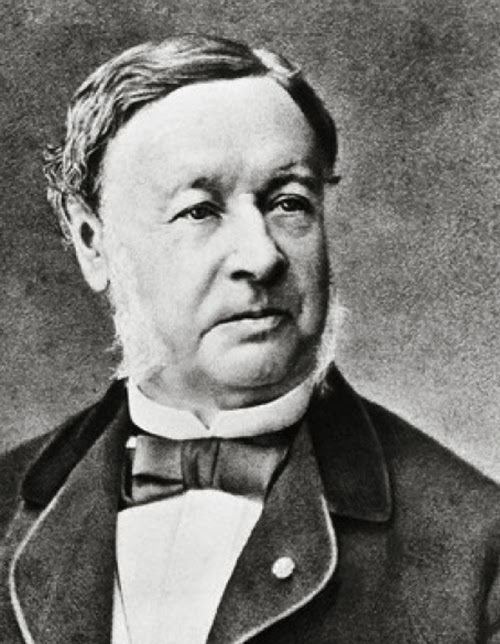Role Physiologist Name Theodor Schwann | Influences Johannes Peter Muller | |
 | ||
Known for Cell theorySchwann cellsPepsin Books Microscopical researches into the accordance in the structure and growth of animals and plants Parents Elisabeth Schwann, Leonard Schwann Similar People Matthias Jakob Schleiden, Rudolf Virchow, Robert Hooke, Antonie van Leeuwenhoek, Robert Brown Died 11 January 1882 (aged 71) Cologne, German Empire Siblings L. Schwann | ||
Theodor schwann
Theodor Schwann (7 December 1810 – 11 January 1882) was a German physiologist. His many contributions to biology include the development of cell theory, the discovery of Schwann cells in the peripheral nervous system, the discovery and study of pepsin, the discovery of the organic nature of yeast, and the invention of the term metabolism.
Contents

Theodor schwann
Early life

Schwann was born in Neuss. His father was a goldsmith, later a printer. Schwann studied at the Dreikönigsgymnasium in Cologne, and then at Bonn, where he met physiologist Johannes Peter Müller.
Contributions

It was during the four years spent under the influence of Müller at Berlin that Schwann's most valuable work was done. Müller was at this time preparing his great book on physiology, and Schwann assisted him in the experimental work required. Schwann observed animal cells under the microscope, noting their different properties. Schwann found particular interest in the nervous and muscular tissues. He discovered the cells that envelope the nerve fibers, now called Schwann cells in his honor.

Schwann discovered the striated muscle in the upper esophagus and initiated research into muscle contraction, since expanded upon greatly by Emil du Bois-Reymond and others. Müller directed Schwann's attention to the process of digestion, and in 1837 Schwann isolated an enzyme essential to digestion, which he called pepsin.

Schwann became chair of anatomy at the Belgian Catholic University of Leuven in 1839. Here he produced little new scientific work, the exception being a paper establishing the importance of bile in digestion. He nonetheless proved to be a dedicated and conscientious professor.

In 1848, his compatriot Antoine Frédéric Spring convinced him to transfer to the University of Liège, also in Belgium. At Liège, he continued to follow the latest advances in anatomy and physiology without himself contributing. He became something of an inventor, working on numerous projects including a human respirator for environments where the surroundings are not breathable.
In his later years, Schwann found growing interest in theological issues. Three years after retiring, Schwann died in Cologne on 11 January 1882.
Cell theory
In 1837, Matthias Jakob Schleiden viewed and stated that new plant cells formed from the nuclei of old plant cells. While dining that year with Schwann, the conversation turned on the nuclei of plant and animal cells. Schwann remembered seeing similar structures in the cells of the notochord (as had been shown by Müller) and instantly realized the importance of connecting the two phenomena. The resemblance was confirmed without delay by both observers, and the results soon appeared in Schwann's famous Microscopical Researches into the Accordance in the Structure and Growth of Animals and Plants, in which he declared that "All living things are composed of cells and cell products". This became cell theory or cell doctrine.
In the course of his verification of cell theory, Schwann proved the cellular origin and development of the most highly differentiated tissues including nails, feathers, and tooth enamel. Schwann established a basic principle of embryology by observing that the ovum is a single cell that eventually develops into a complete organism.
In 1857, pathologist Rudolf Virchow posed the maxim Omnis cellula e cellula—that every cell arises from another cell. By the 1860s, cell doctrine became the conventional view of the elementary anatomical composition of plants and animals. Schwann's theory and observations became the foundation of modern histology.
Vitalism and germ theory
Schwann was the first of Johannes Peter Müller's pupils to break with vitalism and work towards a physico-chemical explanation of life. Schwann delved into the topic of spontaneous generation, contributing to its ultimate refutation. In the early 1840s, he expanded upon the observations of others regarding the proliferation of yeast in alcoholic fermentation by attributing to the yeast a central role as the primary cause. He further asserted that yeast was a living organism. Embattled controversy ensued as eminent chemists alleged that Schwann was undoing scientific progress by reverting to vitalism.
After publishing anonymous mockery in a journal of their own editorship, they published a purely physicochemical if also hypothetical explanation of the interaction resulting in fermentation. As both the rival perspectives were hypothetical, and there was not even an empirical definition of 'life' to hold as a reference frame, the controversy—as well as interest itself—fell into obscurity unresolved. Pasteur began fermentation researches in 1857 by approximately just repeating and confirming Schwann's, yet Pasteur accepted that yeast were alive, thus dissolving the controversy over their living status, and then Pasteur took fermentation researches further.
In retrospect, the germ theory of Pasteur, as well as its antiseptic applications by Lister, can be traced to Schwann's influence.
